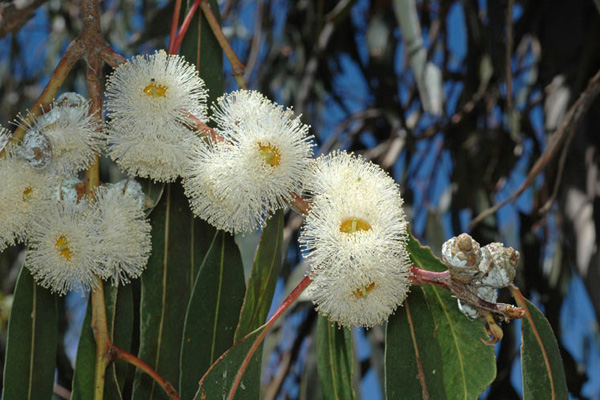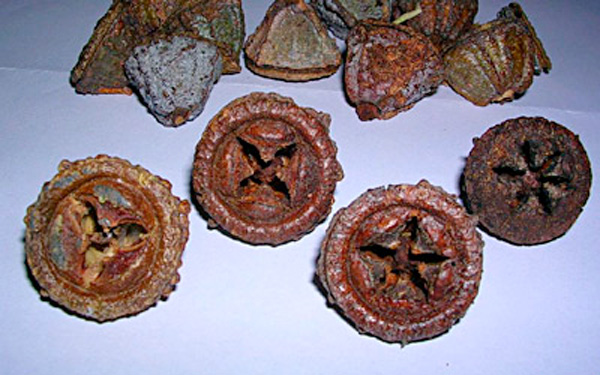General Description:
Eucalyptus globulus is one of the most widely cultivated of Australia’s native trees. It can be found in parks and gardens in many parts of Australia and is well established overseas (eg. Algeria, Brazil, France, India, Spain and Portugal). In California it is so well known that many regard it as a native Californian species. However, it has become so well established that it has spread into areas of natural vegetation and is listed among the exotic pest plants of greatest concern by the California Exotic Pest Plant Council.
Four sub-species are recognised differing from each other in a range of characteristics including bark, habit and flower arrangement. Some authorities now regard the sub-species as separate species in their own right (as indicated by the synonyms below):
- Tasmania blue gum – E.globulus subsp. globulus (syn. E. globulus); found in eastern and south-eastern Tasmania, as well as in the islands of Bass Strait. It also occurs in southern Victoria; flowers occur singly in the leaf axils; rough bark usually retained at base of trunk. This subspecies is the floral emblem of Tasmania.
- Maiden’s gum – E.globulus subsp. maidenii (syn. E. maidenii); found in south-east New South Wales and north-east Victoria; flowers in groups of 7 in the leaf axils; bark usually shed to base.
- Gippsland blue gum – E.globulus subsp. pseudoglobulus (syn. E. pseudoglobulus); found in the far south-east of New South Wales, eastern and southern Victoria and Flinders Island in Bass Strait; flowers mainly in groups of 3 in the leaf axils; bark usually shed to base.
- Southern blue gum – E.globulus subsp. bicostata (syn. E. bicostata); found in a number of locations along the Great Dividing Range from northern New South Wales to western Victoria; flowers mainly in groups of 3 in the leaf axils; rough bark usually retained at base.
E.globulus is a medium to very tall forest tree which may reach 70 metres in ideal conditions but is more commonly 15-25 metres in height. In very harsh and exposed conditions it can adopt a shrubby habit. The tree has a rough, greyish bark which is shed on the upper trunk and branches in long ribbons (as noted above, the bark is shed to the base in some cases but retained at the base in others). The white flowers occur in from winter to early summer. They are followed by greyish, 3 to 6-valved fruits (“gum nuts”).
The tree is popular in cultivation, particularly for its attractive, blue-grey (glaucous) juvenile foliage and fast growth. However, it is really too large for normal-sized surburban blocks and it has a strong and vigorous root system which can cause damage to buildings and underground pipes if the plant is not properly located. The leaves fruits and branches all have a strong ‘eucalypt’ fragrance and can be used as a ‘pot pourri’ in cupboards and drawers.
E.globulus has an open textured wood with distinct growth rings. The timber is strong and durable and has been used for a variety of purposes including railway sleepers, piles, paper making, oil and honey. The tree coppices well and has been used for fuel. The volatile oil content is relatively low but that hasn’t prevented substantial oil harvesting from the species, particularly in Spain and Portugal. The oil is pale yellow in colour and is used in perfumery and in soap making.
Propagation is from seed which germinates readily.

Eucalyptus globulus subsp. maidenii
Photo: Brooker and Kleinig – Australian National Botanic Gardens

Eucalyptus globulus subsp. bicostata – flowers, foliage and fruit
Photo: Murray Fagg – Australian National Botanic Gardens

Eucalyptus globulus ‘gumnuts’, showing 3, 4, 5 and 6 valved capsules
Photo: Jessy Dowling
Other Native Plant Profiles
 Australian Native Plants Society (Australia)
Australian Native Plants Society (Australia)












